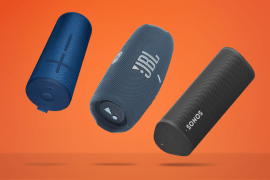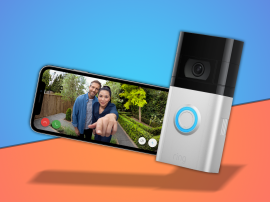Huawei Mate 10 Pro review
Big screen, big battery, big brain and small bezels together equal a massive success
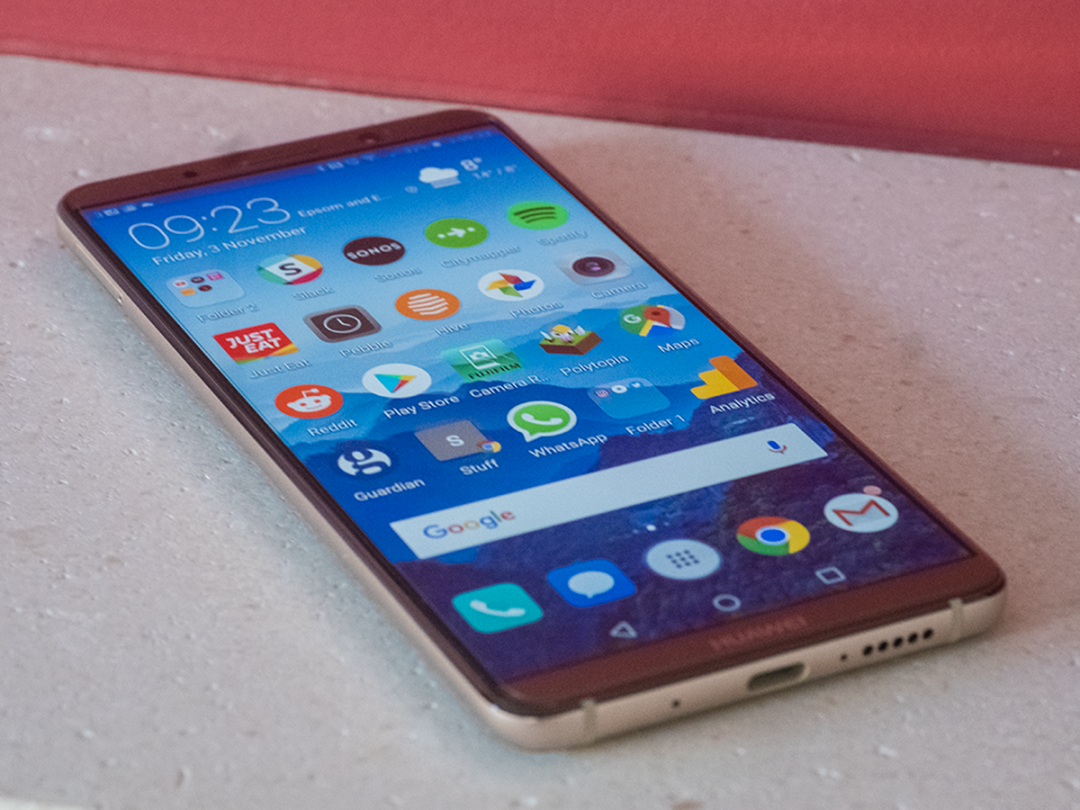
Everyone knows there’s an AI apocalypse on the way – after all, no less an authority than Stephen Hawking says so. And when it does occur, we’ll have smartphones to blame.
The Huawei Mate 10 Pro isn’t the first phone packed with seriously clever AI tech inside it, but it may be the smartest yet: a mobile that’s capable of recognising what you’re pointing your camera at and predicting which app you’re about to open. Add in the fact that it also has a classy glass design, eye-caressing 18:9 screen and mighty battery and you have a smartphone fit to stand with any released this year.
Turns out that whole apocalypse thing was a sacrifice worth making.
DESIGN & BUILD: Shiny pretty thing
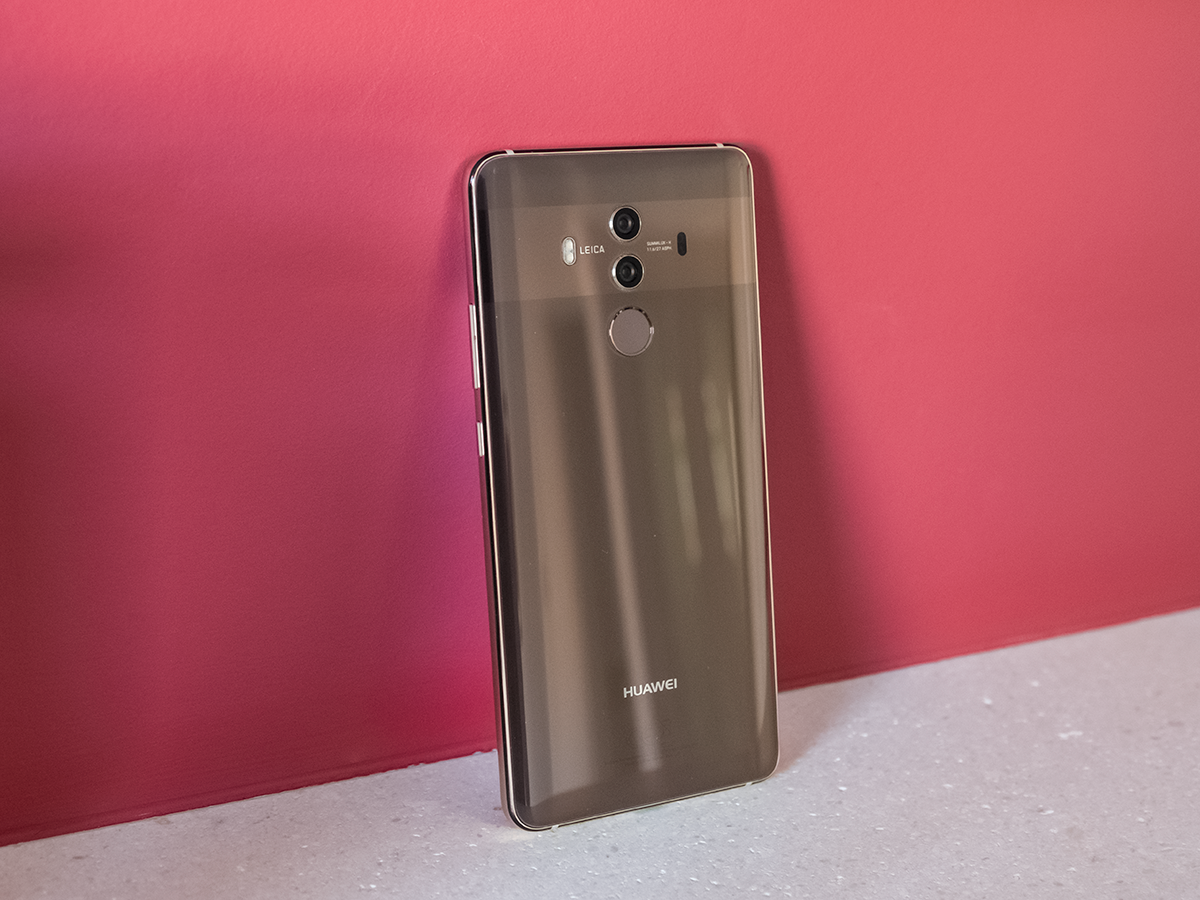
Depending on how charitable you’re feeling, the Mate 10 Pro is either a bandwagon-jumping try-hard or a zeitgeist-surfing hipster in smartphone form.
For starters, it’s got the now de rigueur near-bezel-less front and 18:9 display. The screen doesn’t curve round the sides as on the stunning Samsung Galaxy S8, but those bezels really are impressively slim.
Want proof? Well the Mate 10 Pro’s screen-to-body ratio is around 80%, which puts it ahead of the likes of the Google Pixel 2 XL and LG G6 on that front, and not far behind Samsung’s finest. And yes, we did get those stats from elsewhere.
There’s no notch cutting into the screen as on the Apple iPhone X, either – just a thin strip above it holding the front camera, flash and top speaker, and an equally miniscule one at the bottom with the Huawei logo on it. It really does look suitably futuristic from the front, and is the equal of any 2017 phone other than the S8 and, possibly, the iPhone X.
The rear is even more sumptuous: a single slab of glass sitting on top of coloured aluminium. You can get it in silver, blue or the rather fetching pinky/goldy/browny colour of my review unit, and all three look superb, like particularly shiny sports cars. Of course the major drawback with all that glass is that, well, it tends to smash. The Mate 10 Pro uses specially heat-treated Gorilla Glass, which should make it more resistant to mistreatment, but after a week’s use mine had already picked up a couple of minor scratches.
That said, it’s clearly tougher than your average wine glass, given that it did survive a two-foot drop on to a hard floor. No, that wasn’t a deliberate part of the testing process – rather the result of my main complaint about the Mate 10 Pro’s design: because the glass rear is curved, it has a tendency to slide around when placed on anything other than an absolutely flat surface. Stick it casually on top of a pile of books or something and more often than not it’ll slowly slip off as if possessed by a particularly benign poltergeist.
Still, those curves do make it easier to hold, especially when coupled with its taller-but-narrower dimensions. You’ll need to do some finger-gymnastics to reach up to the top, but the fingerprint sensor – which is placed on the rear, below the camera modules – is exactly where you’d want it to be.
The dual cameras are themselves set on a stylish strip of a slightly different colour to the rest of the phone. They protrude slightly from the body, but that just means you won’t end up pressing one when you’re feeling around for the fingerprint sensor.
Volume and power are on the right-hand side, up top there’s an IR blaster (remember them?) and mic, and down the bottom there’s another speaker, another mic and a USB-C port. But (drum roll please…) there’s no headphone socket – so you’ll need to go wireless or use an adaptor, which Huawei supplies in the box.
You also get a pair of USB-C headphones with the handset, but they sound cheap and tinny and don’t fit nicely either. None out of three ain’t bad, eh? Oh.
All told, it’s something of a stunner: sleek, stylish and suitably premium given the £800 price tag. It’s all fully waterproof too, which is a first for Huawei. My one real criticism, aside from the slippy-slidey thing, is that there’s no home button at all on the front. Still, that does make more room for the screen. Speaking of which…
DISPLAY AND SPEAKERS: LOVELY, LOVELY OLED
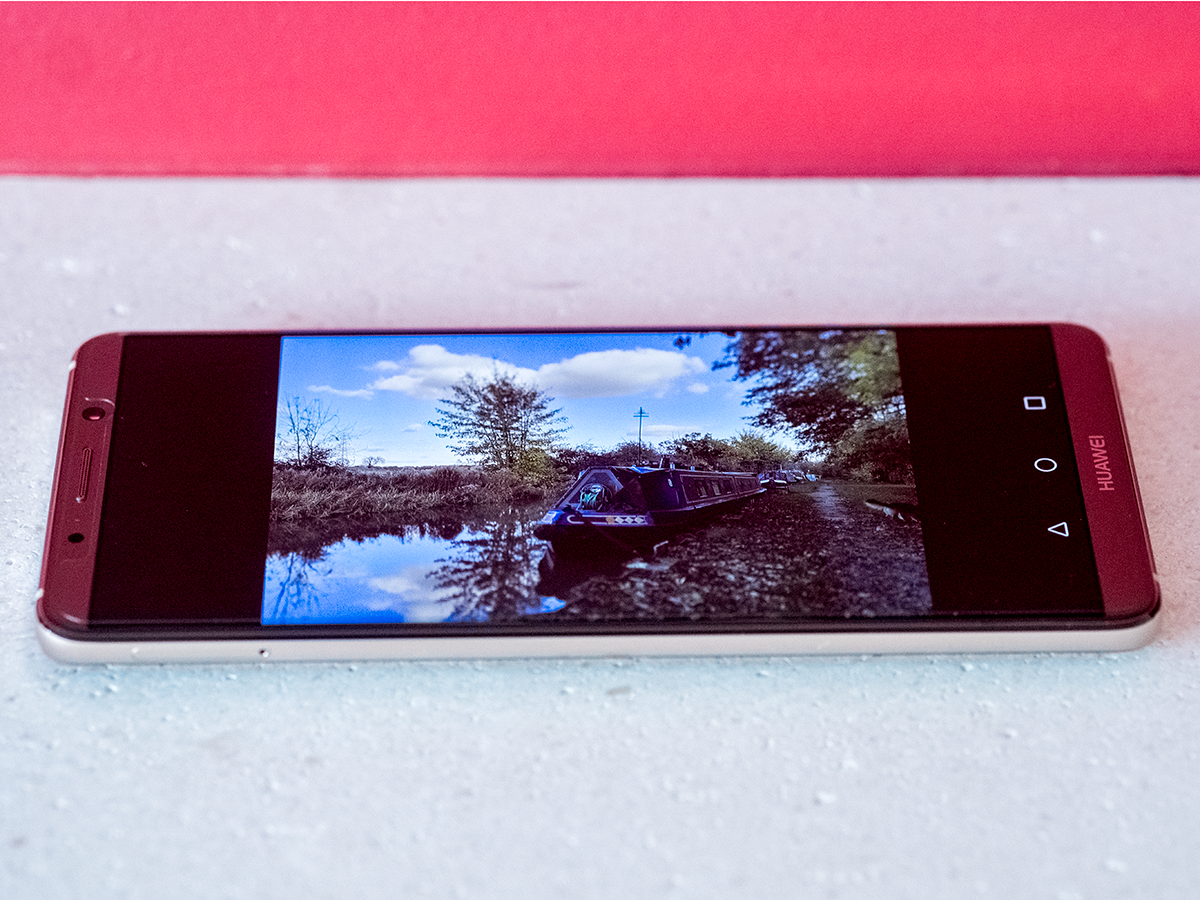
The Mate 10 Pro’s screen is its defining characteristic. It’s what sets it apart from the standard Mate 10, which sticks with the traditional 16:9 panel, and it’s what you’ll spend most of your time looking at.
The good news is that it’s a cracker – if not the absolute best.
What you get here is a 6in, 2160 x 1080 OLED, with a pixel density of 402ppi and an 18:9 aspect ratio. You might think that resolution sounds a little low these days, and you’d be right – once you factor in the extra height, it’s merely full HD, whereas the standard Mate 10 has a 2K panel. But don’t worry too much about that, because in real-world use it’s plenty sharp enough. And besides, once you look at it you won’t be worrying about detail, because you’ll be too busy marveling at the rich colours.
The Mate 10 Pro’s not-so-secret weapon is its OLED display tech. It really just leaves LCD for dead here: the standard Mate 10 may have the higher resolution, but the extra contrast and punchier colours you get with OLED gives the Pro the advantage. It doesn’t go nearly as bright as LCD, though, and won’t fare so well in direct sunlight either – not that you’ll need to worry about that for another nine months now.
The Mate 10 Pro is HDR10 compliant, but I couldn’t get either Netflix or YouTube to display HDR content. Hopefully they’ll both arrive via a software update. Huawei does pre-install a HDR video on the phone, and I can confirm that it looks very lovely indeed, but really it’s hard to judge until I’ve used it properly in the wilds of the internet. I’ll update this review once I have.
Overall it’s a great screen. The extra space you get with the 18:9 ratio makes web browsing and game-playing a delight, and while not every app natively displays full-screen in these dimensions, you can force them to adjust; I’ve routinely done so with no ill effects.
Audio-wise it’s a little more mundane. The two speakers do a decent enough job for podcasts and the like, and go fairly loud, but there’s no real bass to the sound and it’s not proper stereo as on the Google Pixel 2.
CAMERA: A SMARTER SNAPPER
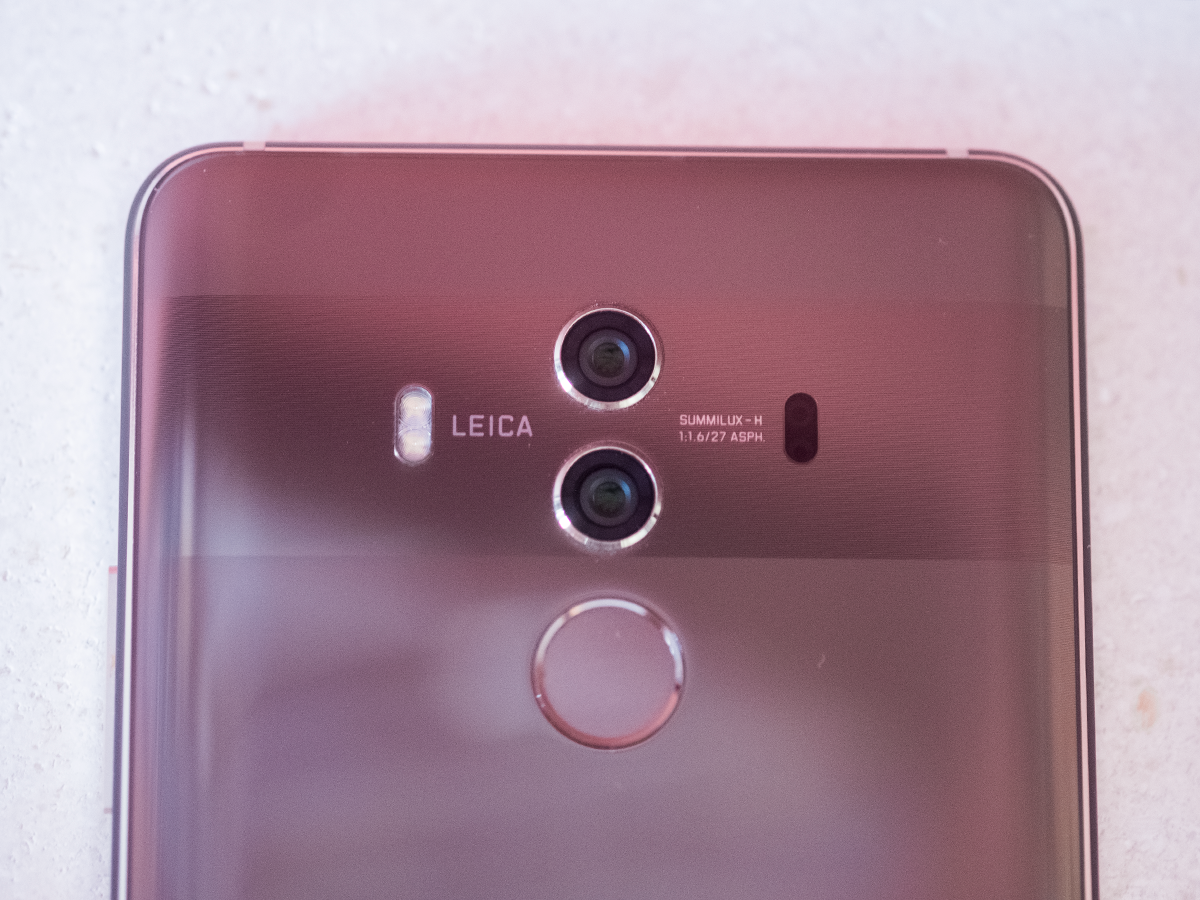
Earlier this year I used and tested the Huawei P10 and P10 Plus, and quickly fell in love with their cameras – but the ones on the Mate 10 Pro are even better.
Huawei’s stuck with the two-camera set-up it introduced back on 2016’s P9. Whaddya mean you don’t remember that? OK then, for those of you who don’t follow Huawei’s history all that closely, that’s a 20MP monochrome sensor paired with a 12MP colour one. The two work together to accomplish all manner of jiggery-pokery, including near-lossless zoom, blurry backgrounds and extra-sharp snaps.
Both cameras have Leica-made lenses with a large, light-gathering f/1.6 aperture, the colour sensor has optical image stabilisation and there’s also laser autofocus and phase detection on board.
The camera app is where you’ll first meet Huawei’s dedicated neural-network processing unit (NPU), the AI brain sitting inside it ready to take over the world. It doesn’t actually do that yet (as far as I know), instead limiting itself to recognising your subject and automatically adjusting settings to match them.
Let’s say you point your camera at a dog – the NPU will use its massive processing power to recognise that the lolling tongue and halfwit eyes it sees do indeed belong to a dog, and will helpfully put a little pooch icon up on the screen. Your photo will then be optimised for doggy snapshots. It also does cats, people, food, plants and more – about a dozen in total.
While it mostly recognises things swiftly, I found that it struggled if a subject wasn’t straight on or in its standard setting. For instance if you point it at a plate of food, it’s fine, but it won’t generally work if the food is still in a packet, even an open one.
Huawei’s Beauty Mode also reappears here, for good and bad. The good is that if you’re a craggy-faced octogenarian, it’ll effortlessly smooth out all those wrinkles and make you look like someone half your age. The bad is that it’ll also make you look like a TopShop mannequin. Oh, and the other bad is that if you’re already young, it’ll just make you look a bit weird.

